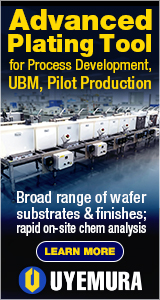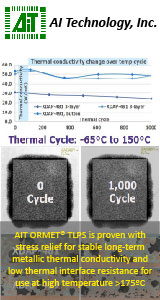|

|
|
| Ask the Experts | |||||||
|
|||||||
|
September 25, 2017 - Updated May 12, 2008 - Originally Posted Solder Bridging on BGAsWhat causes solder bridging on BGAs? Could it be moisture sensitivity, excessive solder paste, mismatched reflow profile or something else? G.A. |
|||||||
| Expert Panel Responses | |||||||
|
Your answer is yes, all of the above. Each variable has to be taken into consideration when they are selected to manufacture and reflow BGA components. The types of flux in the solder paste needs to be evaluated for its ability and capability to absorb moisture and this will define part of the thermal profile ramp up, as any absorption has to be dried out for good reflow. Secondly excess solder paste and the solderability of the paste is important as we need the solder paste to coalesce into one solder ball at the joint of the BGA component. If the solder paste is not solderable it will short to the adjacent pads. The profile is important as it impacts how the board and the BGA component will warp and twist during the reflow cycle. Plastic BGA components will warp and twist and when they push down on the board they compress the solder paste and shorts are created. This is typically seen at the corners of the devices. If you have popcorning, or moisture in the component, the belly of the component will blow out and when this occurs the middle of the component will push against the solder paste and you could end up with shorts in the center of the component. Design of Experiments should be conducted on the products to determine the best operating parameters for the reflow profile on BGA components.
Vice President, Technical Director EPTAC Corporation At EPTAC Corporation, Mr. Lambert oversees content of course offerings, IPC Certification programs and provides customers with expert consultation in electronics manufacturing, including RoHS/WEEE and lead free issues. Leo is also the IPC General Chairman for the Assembly/Joining Process Committee.
Solder Bridging in BGA packages could be due to any of the following reasons PCB Related
President inspīre solutions LLC Bjorn Dahle is the President of inspīre solutions LLC. He has 20 years experience in the electronic manufacturing industry with various manufacturing equipment companies covering pick & place, screen printers and thermal process management.
When you inspect with an X-Ray you can diagnose the different causes of the bridges that you observe. For example; Moisture Sensitivity - You will see large bridges towards the center of the package. Excessive Solder Paste - Random bridges throughout the array. Mismatched Reflow Profile - You might see areas that have not reflowed, or if too fast and too hot areas of solder paste separation. Corner Bridges - Too much heat from the top causing the weaker corners to flex downward bridging the corners.
Regional Sales Manager OK International Inc. Ed Zamborsky is a Regional Sales & Technical Support Manager for Thermaltronics, located in New York. His position requires frequent customer visits throughout North America and the Caribbean and his position encompasses not only sales but the role of trainer and master applications engineer for all of Thermaltronics products. His expertise includes such specialties as hand soldering, convection and conduction reflow techniques, array rework, fluid dispensing equipment, and fume extraction. Ed has authored many articles and has presented many papers on topics such as; Low Volume SMT Assembly, Solder Fume Extraction, SMT Rework, BGA Rework, Lead-Free Hand Soldering, High Thermal Demand Hand Soldering, Lead Free Visual Inspection and Lead Free Array Rework.
From a stencil printing perspective bridging can be the result of a poor print (poor stencil) or a good print but too much solder volume. Inspection after printing will determine which is the cause. The other consideration is the placement pressure. Excessive placement pressure can cause paste to bridge from one ball to the next.
Vice President Technology Photo Stencil For over 18 years, Dr. Coleman has been the vice president of technology for Photo Stencil, working closely with customers to understand their printing requirements. His efforts have resulted in several new stencil products.
|
|||||||
| Submit A Comment | |||||||
|
Comments are reviewed prior to posting. You must include your full name to have your comments posted. We will not post your email address. |
|
Free Newsletter Subscription
Circuitnet is built for professionals who bear the responsibility of looking ahead, imagining the future, and preparing for it. Insert Your Email Address |
|

|






